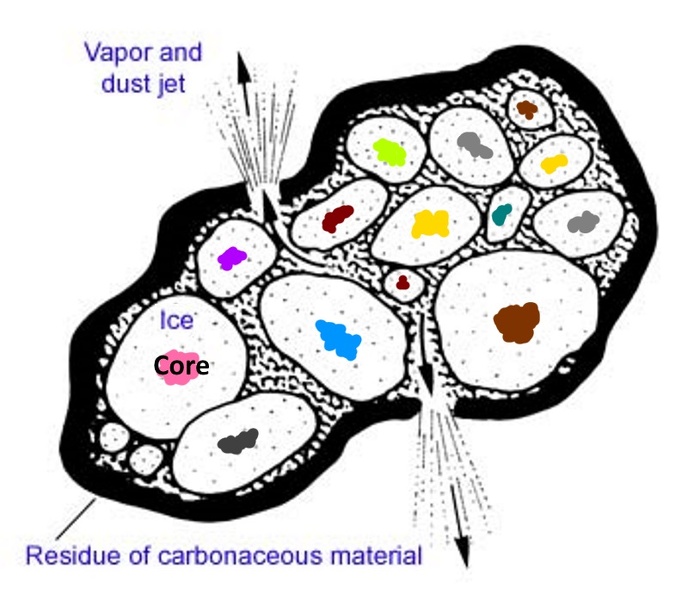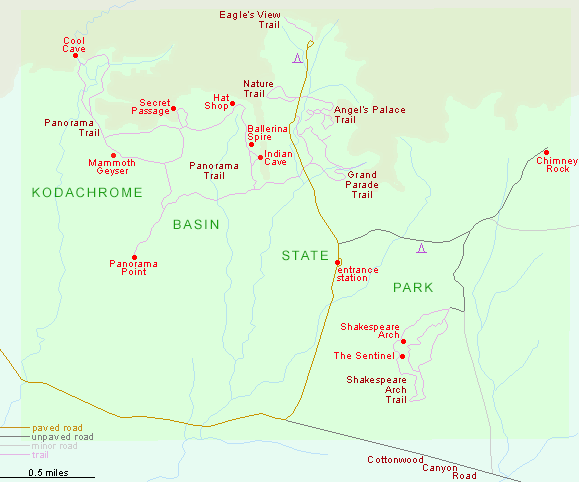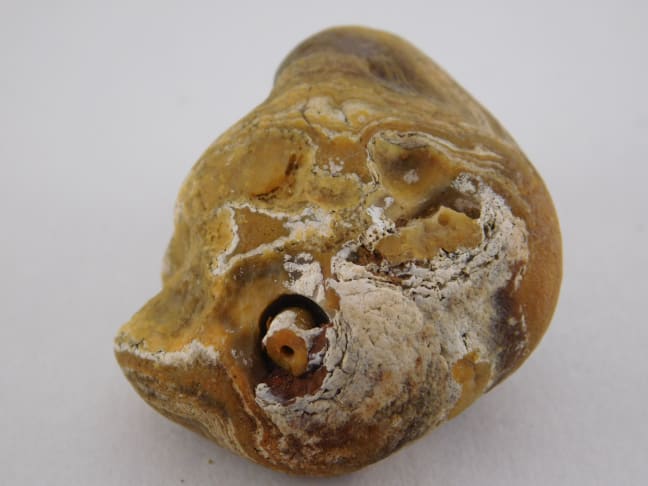Post by 1dave on Oct 27, 2020 11:58:27 GMT -5
1. Arkansas
- - - - - - - - - -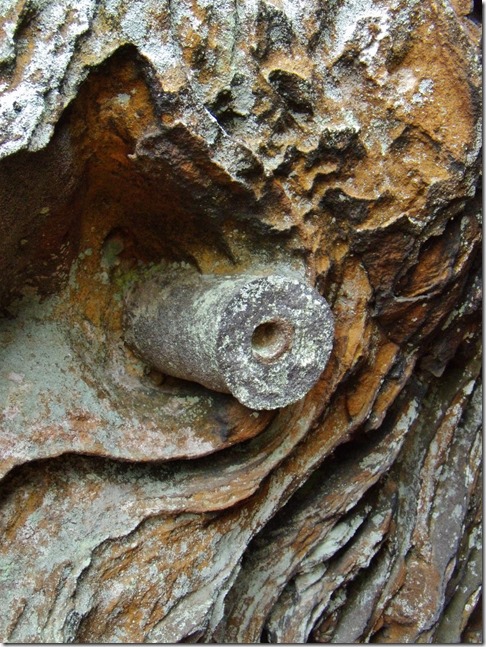
arkansasgeological.wordpress.com/2015/02/19/geopic-of-the-week-sandstone-pipe/#comments
This is a “sandstone pipe” in the Witt Springs Formation of north central Arkansas. At first glance, it seems that someone has managed to insert a pipe into the outcrop (either that, or someone had fairly sophisticated plumbing 320 million years ago). Actually, these naturally occurring features result from iron minerals precipitating out of ground water as it moves through rock. When minerals precipitate from a solution, they do so in concentric bands known as liesegang bands. They were named for Raphael Liesegang: the chemist that first produced them in the laboratory. Once the band of minerals has formed, it makes that part of the rock harder, and, as the rock erodes, the iron-fortified band stands out in relief. Typically liesegang bands form in organic shapes like the ones that surround the pipe above. When they form a cylindrical band, however, they look almost identical to iron pipes.
Photo taken by Richard Hutto
2. Big Spencer Flat, Utah
I wrote about this area in 2018.
forum.rocktumblinghobby.com/thread/83069/big-spencer-flat-moqui-marbles
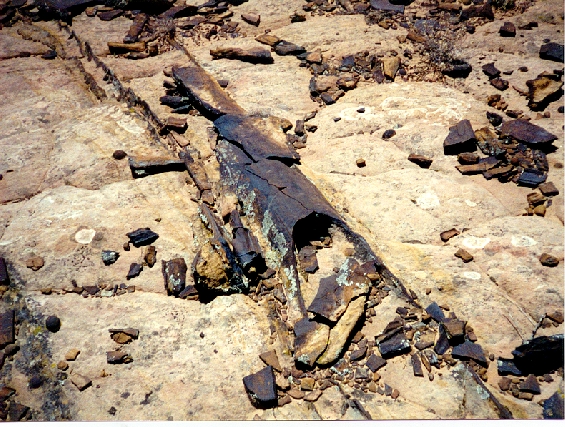
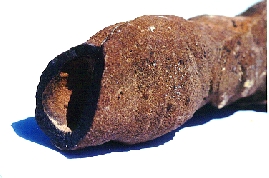
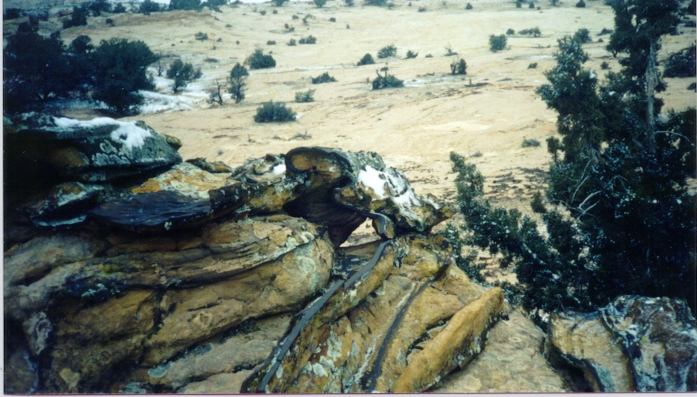
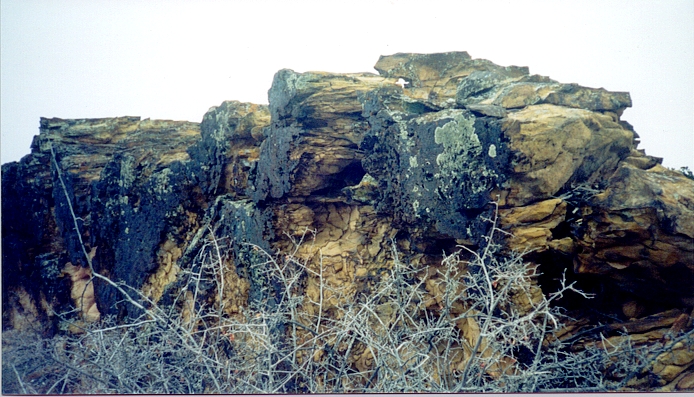
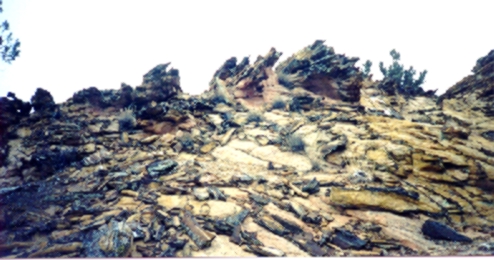
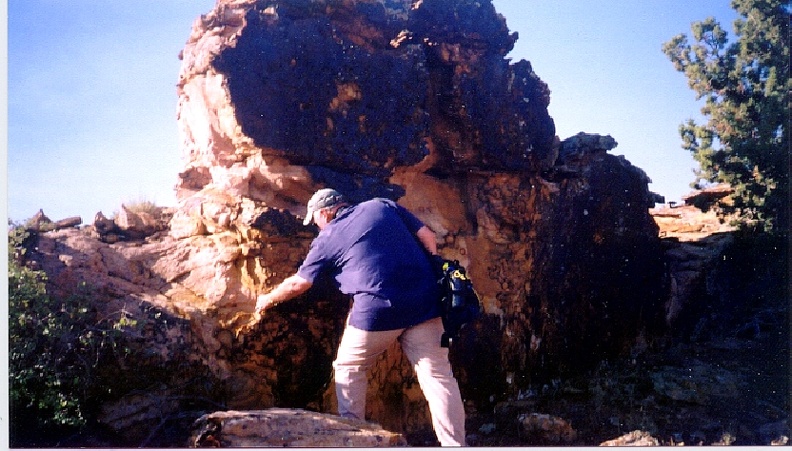
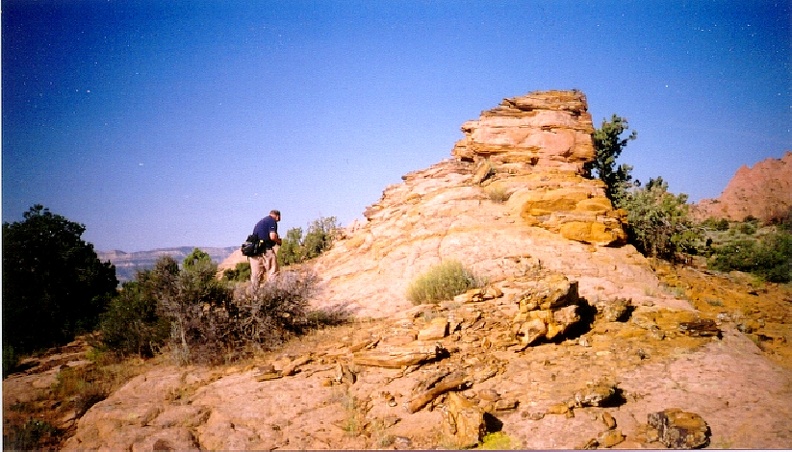
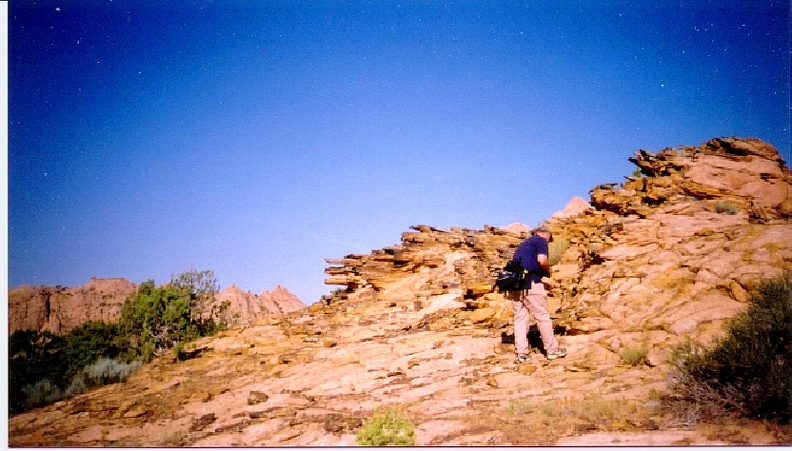
3. Kodachrome Basin, Utah
ancestorsofgods.blogspot.com/2013/07/

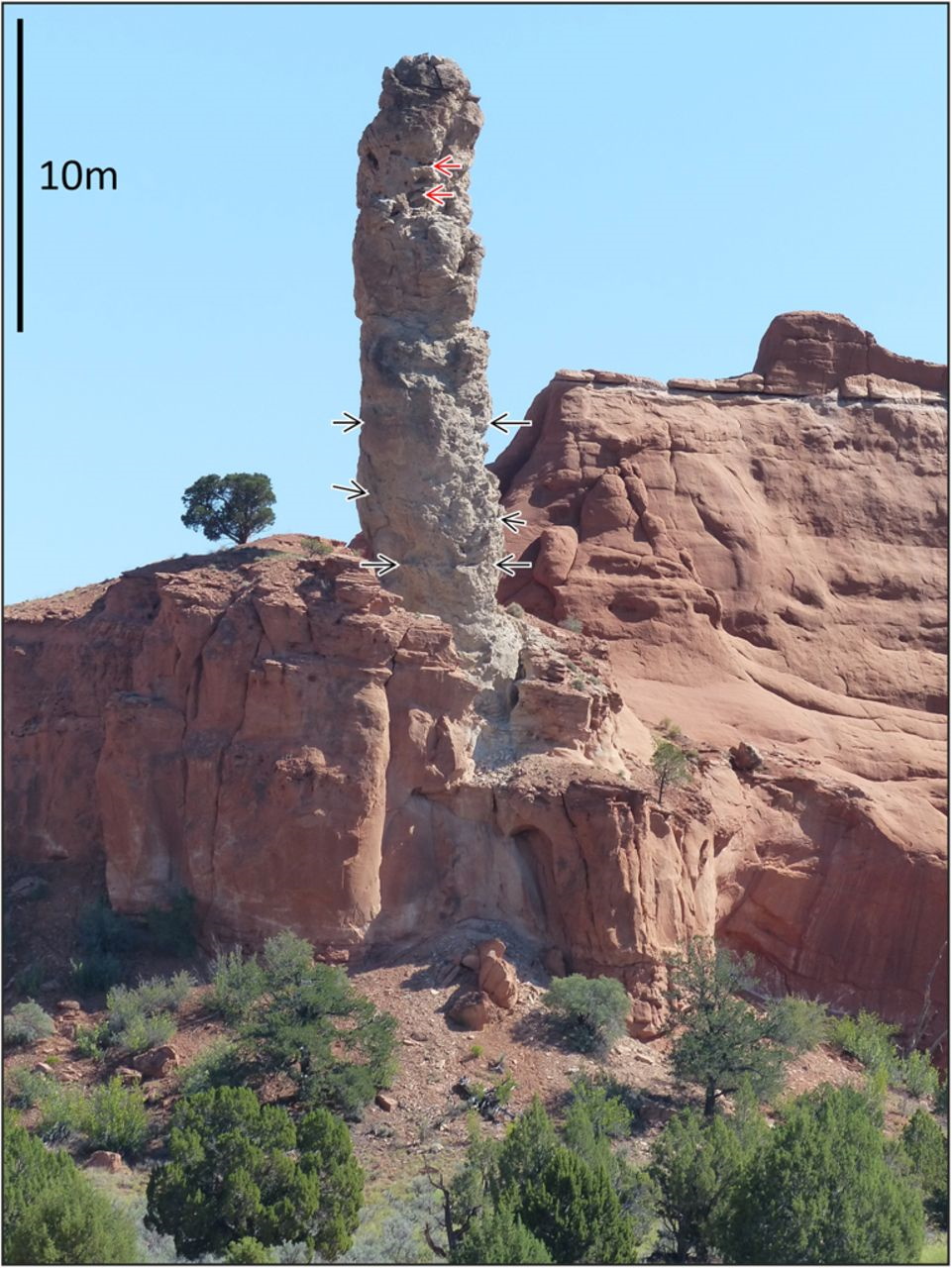
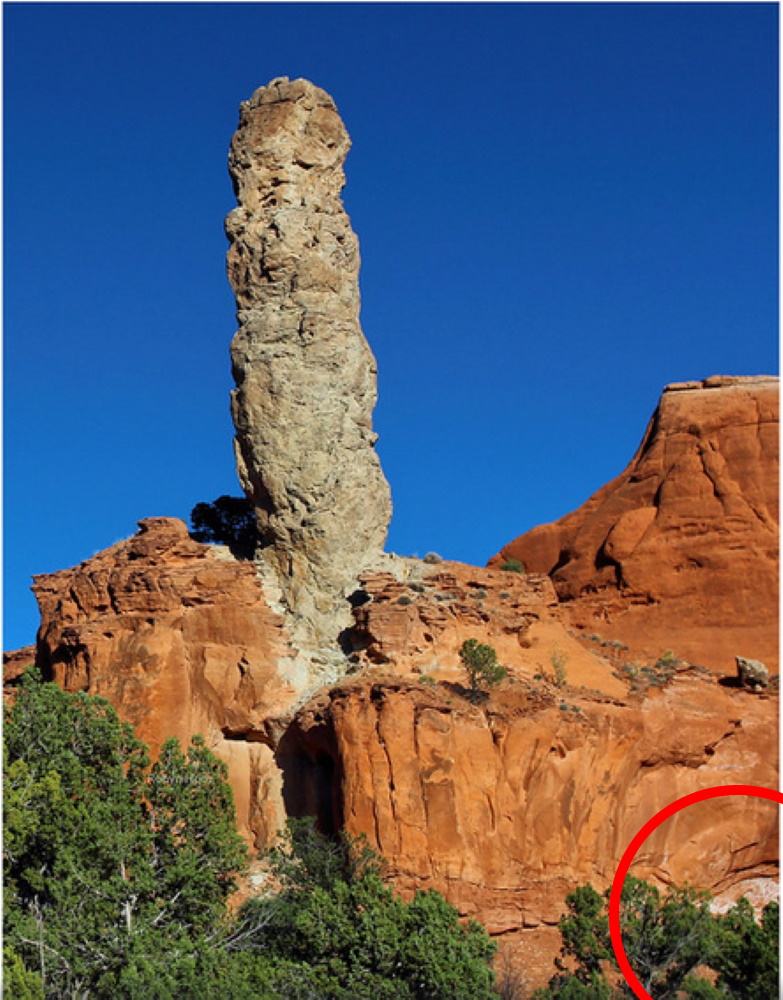

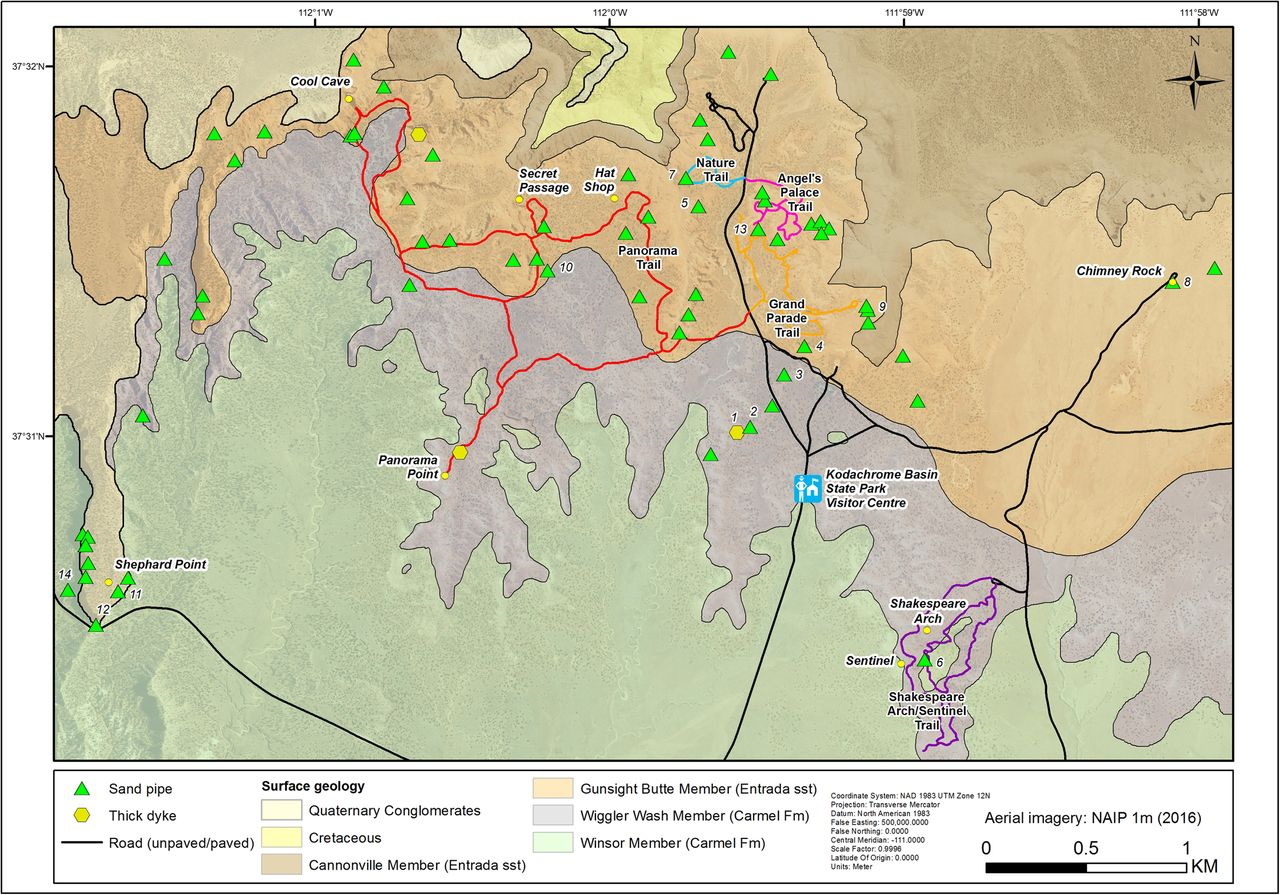
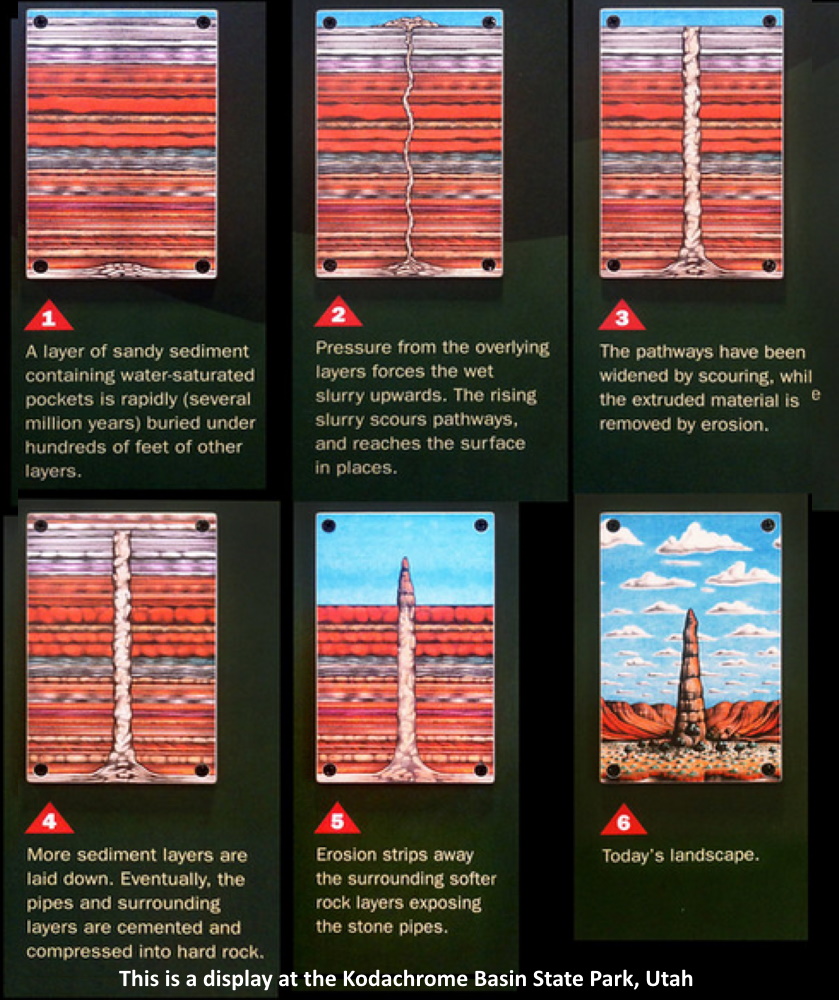
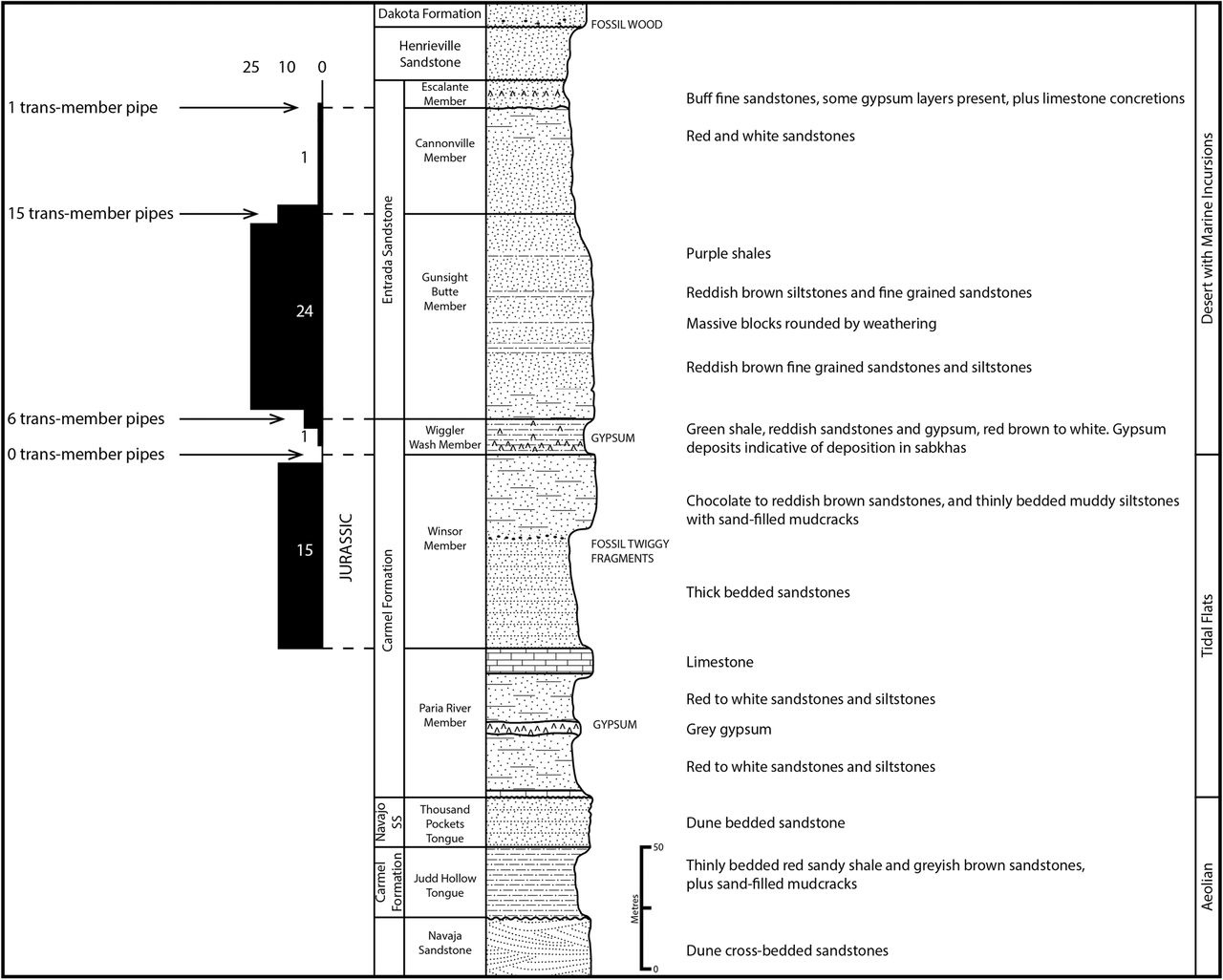
3. Laguna, New Mexico
- - - - - - - - - -

arkansasgeological.wordpress.com/2015/02/19/geopic-of-the-week-sandstone-pipe/#comments
This is a “sandstone pipe” in the Witt Springs Formation of north central Arkansas. At first glance, it seems that someone has managed to insert a pipe into the outcrop (either that, or someone had fairly sophisticated plumbing 320 million years ago). Actually, these naturally occurring features result from iron minerals precipitating out of ground water as it moves through rock. When minerals precipitate from a solution, they do so in concentric bands known as liesegang bands. They were named for Raphael Liesegang: the chemist that first produced them in the laboratory. Once the band of minerals has formed, it makes that part of the rock harder, and, as the rock erodes, the iron-fortified band stands out in relief. Typically liesegang bands form in organic shapes like the ones that surround the pipe above. When they form a cylindrical band, however, they look almost identical to iron pipes.
Photo taken by Richard Hutto
2. Big Spencer Flat, Utah
I wrote about this area in 2018.
forum.rocktumblinghobby.com/thread/83069/big-spencer-flat-moqui-marbles








3. Kodachrome Basin, Utah
ancestorsofgods.blogspot.com/2013/07/







3. Laguna, New Mexico
March 01, 1963
Sandstone pipes of the Laguna area, New Mexico
John S. Schlee
Journal of Sedimentary Research (1963) 33 (1): 112–123.
doi.org/10.1306/74D70DE4-2B21-11D7-8648000102C1865D
Article history
Cite
Share Icon Share
Tools Icon Tools
Search Site
Abstract
Strata of Jurassic age contain cylindrical bodies of sandstone called pipes. They cut gently dipping strata in the Summerville Formation, Bluff Sandstone, and Morrison Formation near Laguna, Now Mexico. The pipes range from a few feet to a few hundred feet in height, and from a few inches to 130 ft in width. Petrographic studies of the material in the pipes and of the enclosing strata show that the pipes are composed of reworked subarkosic sandstone derived from the uppermost units cut by the pipes. Some pipes are composed of brecciated sandstone and mudstone in a fine-grained matrix. The wall rocks sag downward around the pipes, and the pipes are bounded by one or more ring faults. The bottoms of the pipes are in sharp contact with the little-deformed underlying beds. The pipes formed during a period of gentle regional folding, and for the most part are located in belts near synclinal axes. Pipes originated during deposition of the uppermost sandstone units that contained them. They probably formed by gravitational foundering of sand into the underlying water-saturated mud. Some of the foundering may have been aided by solution and removal of underlying gypsum.
Sandstone pipes of the Laguna area, New Mexico
John S. Schlee
Journal of Sedimentary Research (1963) 33 (1): 112–123.
doi.org/10.1306/74D70DE4-2B21-11D7-8648000102C1865D
Article history
Cite
Share Icon Share
Tools Icon Tools
Search Site
Abstract
Strata of Jurassic age contain cylindrical bodies of sandstone called pipes. They cut gently dipping strata in the Summerville Formation, Bluff Sandstone, and Morrison Formation near Laguna, Now Mexico. The pipes range from a few feet to a few hundred feet in height, and from a few inches to 130 ft in width. Petrographic studies of the material in the pipes and of the enclosing strata show that the pipes are composed of reworked subarkosic sandstone derived from the uppermost units cut by the pipes. Some pipes are composed of brecciated sandstone and mudstone in a fine-grained matrix. The wall rocks sag downward around the pipes, and the pipes are bounded by one or more ring faults. The bottoms of the pipes are in sharp contact with the little-deformed underlying beds. The pipes formed during a period of gentle regional folding, and for the most part are located in belts near synclinal axes. Pipes originated during deposition of the uppermost sandstone units that contained them. They probably formed by gravitational foundering of sand into the underlying water-saturated mud. Some of the foundering may have been aided by solution and removal of underlying gypsum.


